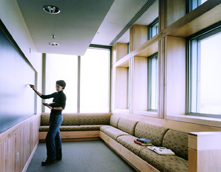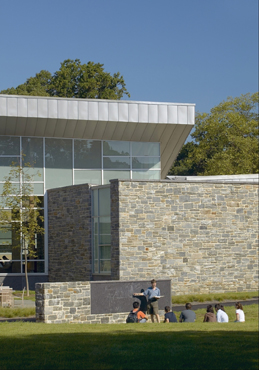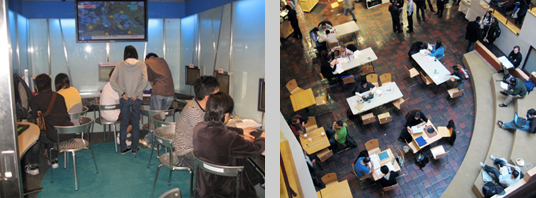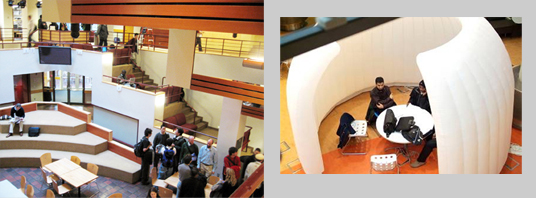Interdisciplinary Teaching and Research |
||||||
This issue's topic is interdisciplinary teaching and research. George highlights the physical implications but stresses the need to create an academic environment that supports the initiative. Arthur's sidebar looks at the policies that might hinder this objective.
If you have reactions or ideas to share, please let us know what you think by e-mailing: editor@dlmplanners.com |
|
|||||
|
||||||
In the past twenty years, one of the most frequently-stated academic and facility goals I have heard is the need to create or renovate buildings to encourage interdisciplinary work. Partly a reflection of evolving funding mandates where government and foundation support is contingent on a collaborative approach to research or instruction, interdisciplinarity has taken on the near-mantric formulation that cutting edge work will, by definition, involve more than one of the "traditional" academic focus areas. As a planner involved with campus design and facility development, I don't feel qualified to judge the validity of this assertion, but I can observe that there are few facility and campus plans created in the last two decades that have not held this notion as a key plan driver. |
||||||

|
The facility responses have included innovations such as:
|
|||||
While such building features can no doubt enhance collaboration, institutions should ensure it by:
Alan Grossman, a senior faculty member at the Harvard Business School, suggested the importance of individual interest and capabilities in overcoming institutional barriers. If the work achievable through collaboration with others is worth doing, creative, committed, organized people will make it happen. As an illustration, he related an instance of collaborating with colleagues in the Graduate School of Education on a research study and the development of a book detailing the study. A road-block arose early on in the process when it became apparent that sharing files on School servers using University networks would be impossible — faculty from one school couldn't access servers maintained at the collaborating faculty members' Schools. Their solution was simple, if somewhat unorthodox — like many a church group, dog lovers club, or youth soccer league, they created a Yahoo user group and got on with their research and writing.
While thoughtfully-designed facilities can no doubt support and enhance collaboration, institutions should first ensure the optimization of such facilities by creating an academic environment supportive of interdisciplinary work and the development of a faculty that knows how to play well with others.
George Mathey
|
||||||
Keep an eye open... New Projects
In addition to our numerous ongoing projects, we're excited about these two new projects. Just Completed
Meet Sasa Lidsky, the newest member of our team! She’s a 6 month old Pembroke Welsh Corgi. Presently, she is attending “Zen Puppy Training” school! We know she’ll be an achiever!
|
Policies and Interdisciplinary Goals If a goal of your college or university is to encourage interdisciplinary teaching and research, are your institutional policies hindering this objective? When your institution is interviewing candidates for a faculty position, do other departments participate in the selection? Do they have a vote? A number of institutions now require that any new hire help another department. So while space provides the opportunity for interdisciplinary initiatives, without a careful review of the policies that might impede its implementation, the opportunity might be lost. |
||||||||
Links Related Topics &
|
|||||||||
© Copyright 2009 464 Common St., Suite 336
|
|||||||||





